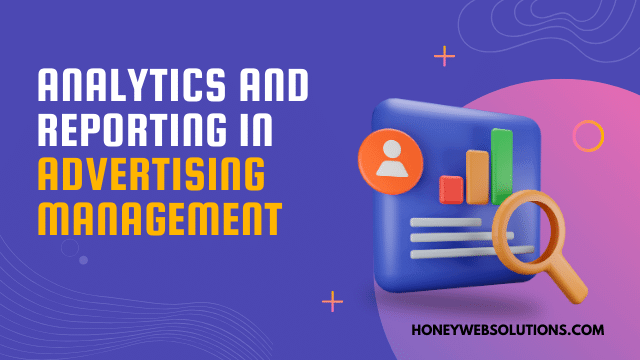
Analytics and Reporting in Advertising Management: Unleashing the Power of Data-Driven Decision-Making
In the ever-evolving landscape of digital advertising, data is the crown jewel that can make or break your campaigns. To thrive in this highly competitive arena, understanding how to leverage analytics and reporting tools within advertising management services is imperative. In this comprehensive guide, we will explore how to use data analytics and reporting to measure the success of your advertising campaigns and make informed, data-driven decisions.
The Significance of Data-Driven Decision-Making
Table of Contents
In the realm of advertising management services, data serves as a compass, guiding your efforts in the right direction. It allows you to measure the effectiveness of your campaigns, understand user behavior, and refine your strategies for optimal results. Here’s how you can harness the power of data-driven decision-making:
-
Comprehensive Data Collection
To start, ensure you have a robust data collection system in place. This includes implementing tracking tags, such as Google Analytics or Facebook Pixel, across your digital assets. These tags capture critical data points, including website visits, conversions, click-through rates, and more.
-
Key Performance Indicators (KPIs)
Define clear Key Performance Indicators (KPIs) that align with your campaign objectives. Common KPIs include:
- Click-Through Rate (CTR): Measures the percentage of users who click on your ads after viewing them.
- Conversion Rate: Tracks the percentage of users who complete a desired action, such as making a purchase or signing up.
- Return on Investment (ROI): Calculates the profitability of your campaigns by comparing the revenue generated to ad spend.
-
Data Visualization
Data can be overwhelming, so it’s essential to use visualization tools like charts and graphs to make sense of it. Dashboards, such as Google Data Studio or Tableau, enable you to create visual representations of your data, making it easier to identify trends and insights.
-
Attribution Modeling
Understand the customer journey by implementing attribution modeling. This method assigns value to each touchpoint in the customer’s path to conversion, helping you identify which channels and interactions are most influential.
-
A/B Testing and Experimentation
Data-driven decisions thrive on experimentation. Conduct A/B tests to compare different ad creatives, landing pages, and targeting options. Use data to determine which variations perform best, then iterate based on these findings.
-
Performance Analysis
Regularly analyze campaign performance data. Look for patterns, anomalies, and opportunities for improvement. Assess the impact of seasonality, trends, and external factors on your campaigns.
-
Custom Reporting
Create custom reports that provide insights tailored to your objectives. Many advertising platforms offer reporting features that allow you to customize the data you receive and the frequency of reporting.
-
Competitive Analysis
Use data to benchmark your performance against competitors. Analyze their strategies, identify gaps, and find opportunities to outperform them.
-
Budget Allocation Optimization
Allocate your budget based on data-driven insights. Shift resources to campaigns and channels that deliver the highest ROI. Ensure that your advertising spend aligns with your KPIs and overall objectives.
-
Predictive Analytics
Leverage predictive analytics to forecast future trends and user behavior. This can help you stay ahead of the curve and make proactive adjustments to your campaigns.
-
Continuous Learning and Adaptation
The digital advertising landscape is dynamic. Stay updated with the latest industry trends, algorithm changes, and technological advancements. Use data to adapt your strategies accordingly.
Conclusion: The Data-Driven Advantage
In the world of advertising management services, data is your competitive advantage. By collecting, analyzing, and interpreting data effectively, you can measure the success of your advertising campaigns, uncover actionable insights, and make informed, data-driven decisions. Embrace the power of data analytics and reporting to refine your strategies continually and stay ahead in the ever-evolving digital advertising arena. With the right tools and a commitment to data-driven excellence, your advertising campaigns can achieve new levels of success.











